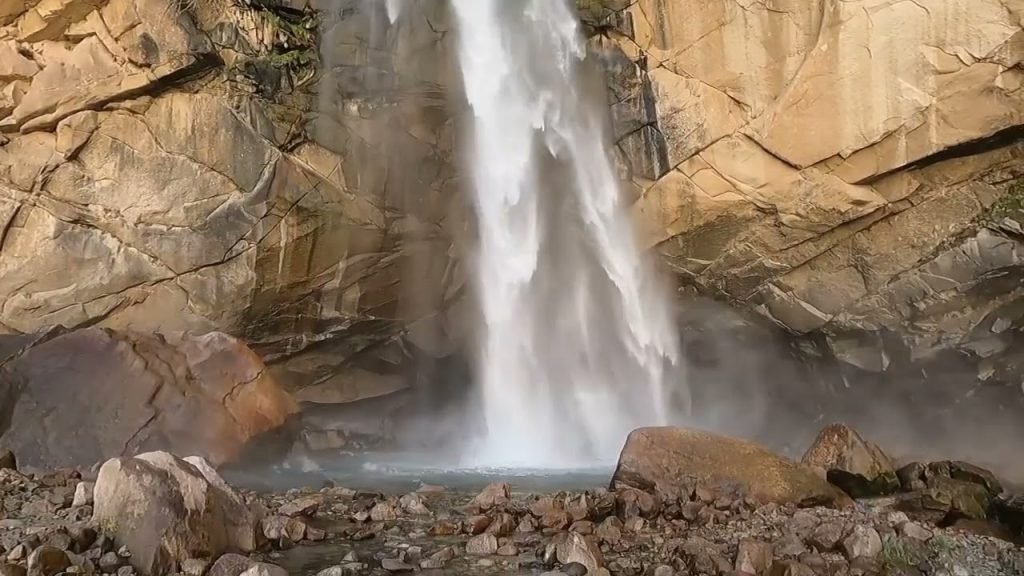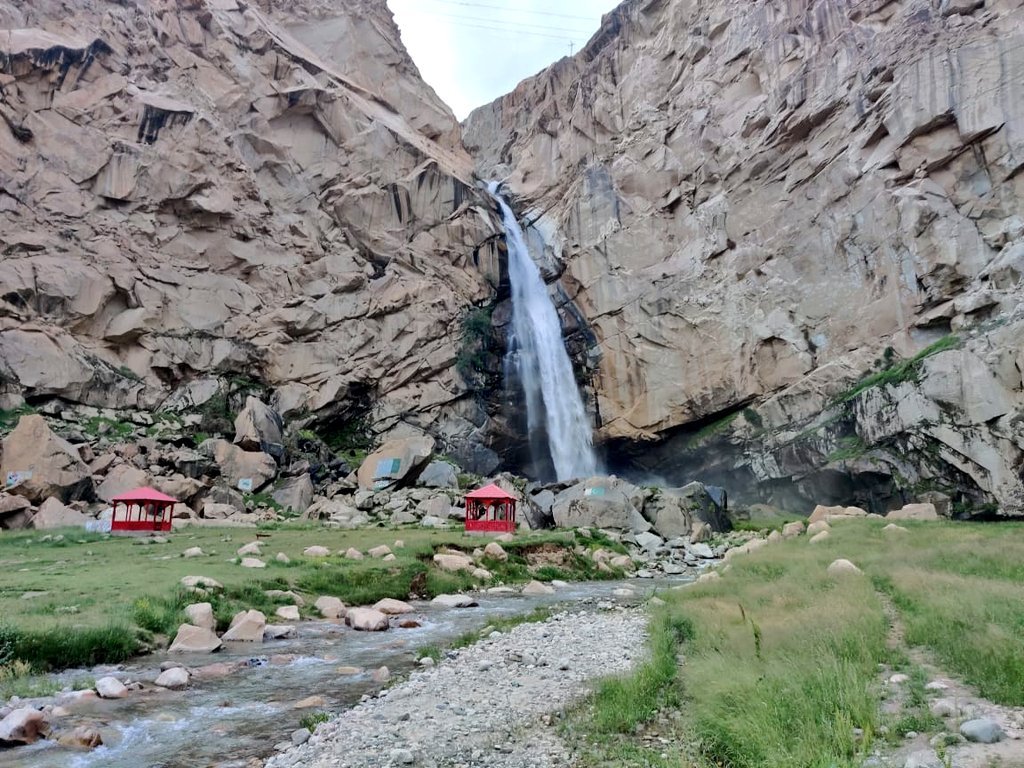Ultimate Khamosh Waterfall Guide: History, Travel Tips, and Real Answers


Hidden in the rugged beauty of Skardu, the Khamosh Waterfall has become one of the most talked-about natural wonders in Gilgit Baltistan. Surrounded by towering mountains and a landscape that feels untouched by time, this waterfall is more than just a scenic stop—it is a destination full of legends, stories, and unforgettable views. Whether you are a first-time traveler to Skardu or someone looking to explore beyond the usual tourist trails, this guide brings together everything you need to know.
Here, you’ll discover how Khamosh Waterfall got its mysterious name, the safest ways to get there, the best seasons to visit, and what locals say about its history. We’ll also look at tips for families, photographers, and adventure seekers to help make your journey both safe and memorable.
Table of Contents
What Makes Khamosh Waterfall Unique?
Verified Discovery and Location
The Khamosh Waterfall is located in Satpara Valley, around 25 kilometers from Skardu city. Sitting at an altitude of nearly 8,000 feet, it was relatively unknown until the 1990s when local explorers began highlighting it as a hidden marvel. Unlike many other waterfalls in Gilgit Baltistan, Khamosh flows through rocky terrain with a dramatic vertical drop that creates a thundering sound in peak season, yet it is surrounded by striking silence—giving rise to its name “Khamosh,” meaning silent.
- Location: Satpara Valley, Skardu
- Altitude: ~8,000 ft above sea level
- Best Route: Jeep ride from Skardu via Satpara Road
- Approximate Distance: 25 km from Skardu city
Local Legends and Myths vs Facts about Khamosh Waterfall
Like many remote wonders of Pakistan, Khamosh Waterfall has its share of myths. Local stories suggest that the area is “haunted” and that the silence of the surroundings hides secrets of ancient spirits. Another popular tale claims that the waterfall’s flow goes mysteriously quiet at night, which locals took as a divine sign. However, travel researchers and visitors confirm that the silence is due to the natural acoustics of the valley—sound gets absorbed by the surrounding rock faces, making the name less mystical and more geographical.
Myth: The waterfall stops flowing at night. Fact: The sound diminishes because of the valley’s unique echo patterns.
Myth: The area is unsafe due to supernatural stories. Fact: It is safe for visitors, with many families and tourists visiting regularly.
Stepwise Travel Guide to Khamosh Waterfall
Access Routes (Updated for 2025)
Reaching the Khamosh Waterfall is an adventure in itself. The most common route starts from Skardu city, following Satpara Road toward Satpara Lake. After roughly 20 kilometers, you’ll turn onto a rugged track that requires a jeep or 4×4 vehicle. Travel time is usually 1.5 to 2 hours depending on weather and road conditions. Along the way, you’ll pass small villages where you can stop for tea or snacks, giving you a glimpse into the local culture.
- Starting Point: Skardu city
- Transport: Jeep or 4×4 recommended
- Travel Time: 1.5–2 hours
- Road Condition: Rocky, seasonal landslides possible
- Nearest Fuel Stop: Skardu town (no fuel pumps near waterfall)
Best Time to Visit Khamosh Waterfall (Weather by Month)
The best months to visit are between May and September when the snow melts and the waterfall is at its fullest. Winters often block access roads due to heavy snowfall, making it difficult or impossible to reach. For photography, June and July offer lush green surroundings, while September brings golden autumn colors.
| Month | Weather | Accessibility | Best For |
|---|---|---|---|
| May | Cool, melting snow | Accessible by jeep | Adventure seekers |
| June–July | Mild, lush greenery | Fully open | Families, photographers |
| August | Monsoon showers | Occasional roadblocks | Waterfall at peak flow |
| September | Cool, autumn colors | Good access | Hikers, culture lovers |
| Oct–Apr | Snowfall, extreme cold | Road mostly closed | Not recommended |
Travel Budget and Cost Estimates for Khamosh Waterfall
While there is no official entry fee for Khamosh Waterfall, visitors should budget for transportation, food, and accommodation. Costs can vary depending on whether you are traveling solo, with family, or through a local tour operator.
- Jeep hire from Skardu: PKR 8,000–12,000 (round trip)
- Meals/snacks: PKR 1,000–2,500 per person
- Guided tour (optional): PKR 4,000–7,000 per group
- Accommodation in Skardu: PKR 5,000–15,000 per night (varies by hotel)
Pro Tip: Traveling in a group significantly reduces per-person costs since jeep rentals and guides can be shared.
Accessibility of Khamosh Waterfall (Families, Children, Wheelchair)
Accessibility at Khamosh Waterfall is moderate. Families with children can easily visit with proper planning, but wheelchair access is currently limited due to uneven and rocky paths near the waterfall. Safety railings are not present, so extra care is advised, especially for kids.
- Families: Safe if children are supervised
- Wheelchair Users: Limited access (no ramps or paved paths)
- Elderly Travelers: Possible with assistance and support
- Facilities: No toilets or food stalls at the site—carry essentials
Essential Planning Tips for Khamosh Waterfall Visitors
Packing Checklist for Khamosh Waterfall
Proper preparation can make your journey to Khamosh Waterfall much smoother. Since the area is remote with minimal facilities, travelers should bring essentials with them. Here’s a quick checklist:
- Warm clothing and rain jacket (weather can change quickly)
- Comfortable hiking shoes with good grip
- Water bottles and reusable flasks
- Snacks or packed lunch
- Power bank for phone/camera
- First-aid kit and any personal medication
- Trash bags (leave no litter behind)
Safety Tips at Khamosh Waterfall
Though the site is generally safe, visitors should take basic precautions to ensure a smooth experience. The waterfall’s rocks can be slippery, and weather changes quickly in Satpara Valley.
- Avoid standing too close to the edge of the waterfall.
- Check weather forecasts before leaving Skardu.
- Travel with a local guide if visiting for the first time.
- Carry extra fuel or confirm your jeep is in good condition.
- Supervise children closely at all times.


Local Community and History
Visitor Stories and Experiences
Locals often share stories of how Khamosh Waterfall became a picnic spot for families during the summer months. Many travelers recall the contrast between the roaring water and the eerie silence around it. Visitors describe the journey itself as half the adventure, with narrow roads, sudden mountain views, and the occasional stop for chai in roadside villages.
Restoration, Conservation, and Legacy
Currently, Khamosh Waterfall is not a heavily commercialized site, which helps maintain its pristine condition. However, local tourism authorities and community groups are discussing potential measures to improve safety, provide facilities, and promote eco-friendly tourism. Conservationists emphasize the importance of sustainable practices—such as carrying back all trash and limiting visitor traffic during fragile seasons—to protect this natural wonder for future generations.
Comparing Khamosh Waterfall to Other Skardu Waterfalls
Khamosh Waterfall vs Manthokha Waterfall
Manthokha Waterfall is often compared to Khamosh for its size and accessibility. While Manthokha is easier to reach and has basic facilities like food stalls, Khamosh Waterfall is more secluded and offers a raw, untouched experience. Travelers looking for comfort may prefer Manthokha, but those chasing authenticity often choose Khamosh.
Other Notable Skardu Waterfalls
- Manthokha Waterfall: Known for height and picnic facilities.
- Chunda Waterfall: Seasonal and best visited after rainfall.
- Barah Waterfall: Popular with locals, smaller but charming.
FAQ: Traveler Questions
What is the best time to visit Khamosh Waterfall?
The best time is between May and September when the waterfall is flowing at full strength. Winter visits are discouraged due to heavy snowfall and blocked roads.
How do you reach Khamosh Waterfall from Skardu?
You can hire a jeep or 4×4 from Skardu city. The route via Satpara Road takes 1.5–2 hours and passes through Satpara Valley villages before reaching the waterfall.
Is Khamosh Waterfall safe for families?
Yes, families regularly visit. However, safety precautions should be taken since there are no railings or facilities. Children should be supervised closely.
What are the nearby attractions to Khamosh Waterfall?
Nearby attractions include Satpara Lake, Manthokha Waterfall, and Deosai National Park. Many travelers combine these into a weekend itinerary.
Final Talks
The Khamosh Waterfall is more than just a hidden gem in Skardu—it is an experience that blends natural beauty, local legends, and cultural significance. From its thunderous cascade to the mystical silence that surrounds it, Khamosh offers something truly unique for every traveler. Whether you are planning a family trip, a photography tour, or an offbeat adventure, this guide provides the answers and tips you need for a safe and unforgettable journey.
Read More About: Alpine Forests in Pakistan: A Complete Guide to High-Altitude Ecosystems
References
- Paktourism Portal – Khamosh Waterfall
- Skardu.pk Travel Guide
- Pak Geo Tour – Khamosh Waterfall Guide
- TripAdvisor – Khamosh Waterfall Reviews
- Pakistan National Tourism Portal
- Pakistan Meteorological Department
- Pakistan Museum of Natural History


Author: ZunNurain Khalid — Travel & Tourism Specialist, Founder of ExploreX Pvt. Ltd., and advocate for sustainable tourism in Pakistan. With over a decade of experience in digital marketing and destination branding, ZunNurain has worked extensively on promoting Pakistan’s natural and cultural heritage.

